Postcard from Mesoamerica
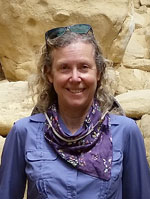
As Geography research begins in the field and ends in the field, so does my Presidential Column. I had the good fortune to be able to compose most of my first column (July 2018) during my fieldwork in Belize and Guatemala in Central America. Now I am filing my final column as your AAG President from field camp in northwestern Belize, working with an international team of colleagues, students, and volunteers to study the resilience of ancient Maya society. While “Op-Ed” stands for Opinion/Editorial, it also represents both Opportunity and Education. I thank you, my readers and fellow AAG members, for the Opportunity to freely explore challenging and timely issues and to share thoughts and opinions on current events and research over the last year. I am also grateful for the platform of the AAG Newsletter on which to perform one of my primary duties as a Professional Geographer: to Educate, to enable understanding and discussing important issues from local to global scales, and, to inspire actions to solve the planet’s most critical human and environmental problems. It is a tall order, but we should set expectations for ourselves at the very highest level to ensure a better future for people, the environment, and the planet.
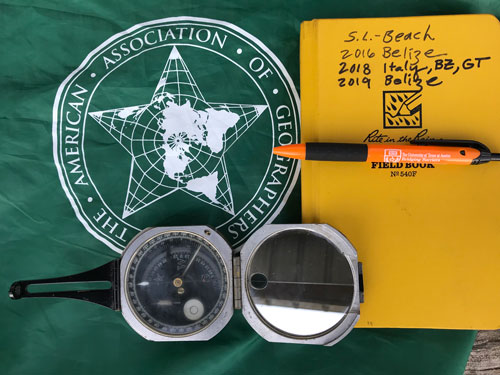
This is my 26th field year exploring the palimpsests of millennia of urban and agricultural landscapes of parts of modern Mexico, Belize, and Guatemala. Each year we discover more about how extensive and influential ancient humans have been in the Americas. We have increased our understanding of human influences on the earth, from William Denevan exploding the Pristine Myth in the 1992 Annals Special issue (82(3):369-85), to the 2013 dawning of the journal The Anthropocene, (Anne Chin, Editor-in-Chief), to the May 2019 binding vote of the Anthropocene Working Group approving that the Anthropocene shall be “treated as a formal chrono-stratigraphic unit” and its primary marker will be “one of the stratigraphic signals around the mid-twentieth century of the Common Era” (AWG, 5/21/19). It is still a complicated matter of agreeing when that marker occurs in time globally. While the swirling smog of the 19th C. Industrial Revolution was a leading, if not charismatic, candidate, not to mention the globally detectable nuclear testing fallout signal of the mid-20th C., evidence still builds for an Early Anthropocene. Denevan’s idea (1992) that 18th century human visibility on the landscape was less substantial than that which was visible before 1492 still stands the test of time, further supported by W. F. Ruddiman et al.’s 2016 work (Rev. Geophys. 54: 93-118) on early, increased releases of CO2 and Methane to the atmosphere associated with increased burning and farming like rice paddy (wetland) agriculture in Asia. Now with advanced geospatial technology such as Lidar guiding our field exploration and validation, we are fast on the trail of finding significant extents of ancient landesque capital, including cultivated landscapes, ranging far across the Western Hemisphere, including Mesoamerica. Much else has changed in field research infrastructure since the early 1990s: Quad maps in Belize were produced for us in 1993 as Ozalid blueprints in the Government Mapping Office in Belmopan. Now there is a Land Information Center providing geospatial data. In 1994, a colleague mounted a brick-shaped GPS unit on an extension pole in the jungle, trying to reach a satellite signal at just the right hour. For communications, there was a payphone and one fax machine in the general store in the village near our field camp, a lifeline for college students with final papers due who were here in the field to collect data before the rainy season hit. Now we despair that the local internet is not working today in camp. Yet, there are some regions here in Belize and beyond still too remote to access cell service, allowing us a moment to also rejoice that there are places untouched by clouds of 4G data smog to walk through and be interrogated by.
My last official duty as AAG President will take place at the end of June, when I travel on behalf of the AAG to Beijing and Harbin, China, where I will be hosted by the Geographical Society of China to present in a session on “Scientific Organization Governance” at the China Association of Science and Technology Meeting, and will present academic talks on my team’s Ancient Water Management research, at Chinese universities. It is a privilege to be able to collaborate internationally, and to thereby conduct science and science diplomacy. Getting back to my yearlong theme of Science, Geography, and Human Rights, we must strive to fulfil the ideals of making science accessible to the benefit of all people; of guaranteeing scientists their rights to practice and to preserve science; and to protect scientists’ rights to collaborate freely and internationally.
Although my title will change to Past President on 1 July, my service to AAG as a member of the leadership team will continue for one more year: on the AAG Executive Committee, the AAG Council, and the Disciplinary Matters Committee. My writing assignment will shift from a monthly column, to composing the content and form of the Past Presidential Address for the Denver meetings and for the Annals, as per tradition. I look forward to my new role, and continuing to serve our association. I congratulate the incoming President, David Kaplan, and thank him for his service this past year as Vice President, and ask that you all lend your support to his efforts and themes. I also thank Derek Alderman for his service as Past President, and congratulate him on completing his term on the AAG Council, concluding on 30 June. I also extend a warm welcome and best wishes to Vice-President elect Amy Lobben. Speaking of service, please do not forget to nominate deserving AAG members for awards! See the AAG website for complete details.
The AAG Council and AAG Committees and Task Forces deserve much of our thanks for keeping our association vibrant and dynamic through their volunteer efforts. I am most grateful for the lasting friendships and professional relationships that have been formed with the Officers, Council, Committees, and the AAG Staff, and thank them all for their support during my presidency and beyond. My final words of praise are for the AAG Staff, the Legal team, and retiring Executive Director Dr. Douglas Richardson, for their day in and day out dedication to this non-profit organization’s mission and members. I will not be able to name all of the AAG staff in this column but please know you are a terrific team! I will note that AAG’s Rebecca Pendergast and Emily Fekete are especially thanked for their good-natured patience with my stretching the concept of “column publication deadline.”
AAG Members, I thank all 12,000 of you for making the AAG a community. I look forward to seeing you at future meetings, especially in Denver for the 2020 AAG Annual Meetings. Make a Difference with Geography. Have a great summer, wherever your Geography takes you!
— Sheryl Luzzadder-Beach
President, American Association of Geographers
Professor, Geography and the Environment and C.B. Smith Fellow in US-Mexico Relations, University of Texas at Austin
slbeach (at) austin (dot) utexas (dot) edu
DOI: 10.14433/2017.0055
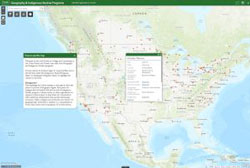 The AAG is pleased to announce the release of a
The AAG is pleased to announce the release of a ![Graph 1: AAG Minority Membership since 1981.[6]](https://www.aag.org/wp-content/uploads/2021/11/AAG-minority-membership-640x332-1-300x156.png)
 “Complex organizations have complex interests and responsibilities, especially in the 21st century… Together, we Geographers have worked diligently over the last several years to shine a light on equity and banish harassment and bullying from our meetings, our places of work, and our lives. We have more work to do, but we do have a heightened awareness, and a strong, renewed resolve to move forward with justice.”
“Complex organizations have complex interests and responsibilities, especially in the 21st century… Together, we Geographers have worked diligently over the last several years to shine a light on equity and banish harassment and bullying from our meetings, our places of work, and our lives. We have more work to do, but we do have a heightened awareness, and a strong, renewed resolve to move forward with justice.”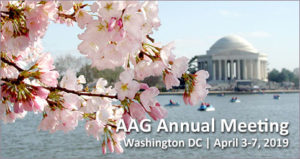 The 2019 AAG Annual Meeting hosted 8,500 students and professionals in Washington, DC. Approximately 30% of attendees came from 78 different countries to share the latest in research, policy, and applications in geography, sustainability, and GIScience. View our online gallery of photos to revisit the featured themes, special guest speakers and events, and the 120+ awards presented at the conference. Videos of several special sessions including the Opening Session and Presidential Plenary, Eric Holder’s Keynote, Atlas Awardee Carla Hayden, AAG Executive Director Doug Richardson’s Retirement Remarks, the Past President’s Address, and Recalling Gilbert White are available on the AAG YouTube Channel.
The 2019 AAG Annual Meeting hosted 8,500 students and professionals in Washington, DC. Approximately 30% of attendees came from 78 different countries to share the latest in research, policy, and applications in geography, sustainability, and GIScience. View our online gallery of photos to revisit the featured themes, special guest speakers and events, and the 120+ awards presented at the conference. Videos of several special sessions including the Opening Session and Presidential Plenary, Eric Holder’s Keynote, Atlas Awardee Carla Hayden, AAG Executive Director Doug Richardson’s Retirement Remarks, the Past President’s Address, and Recalling Gilbert White are available on the AAG YouTube Channel. The 2019 World Geography Bowl was held during the AAG Annual Meeting on Thursday, April 4 at 7 PM. The 30th annual round robin quiz competition concluded with student teams from the Mid-Atlantic AAG Division and the Southeast Division of the AAG competing head to head, with team MAD pulling out the victory. MAD’s victory marks back to back championships for the division. The World Geography Bowl supports close to 60 students to help offset the costs of attending the AAG Annual Meeting.
The 2019 World Geography Bowl was held during the AAG Annual Meeting on Thursday, April 4 at 7 PM. The 30th annual round robin quiz competition concluded with student teams from the Mid-Atlantic AAG Division and the Southeast Division of the AAG competing head to head, with team MAD pulling out the victory. MAD’s victory marks back to back championships for the division. The World Geography Bowl supports close to 60 students to help offset the costs of attending the AAG Annual Meeting.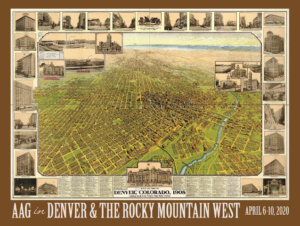 Join us for the mile high meeting. Mark your calendar for the AAG Annual Meeting in Denver on April 6-10, 2020. We invite you to organize and participate in sessions, workshops, field trips, special events, and activities. Look for the call for papers in July 2019. We look forward to seeing you in the Rocky Mountains!
Join us for the mile high meeting. Mark your calendar for the AAG Annual Meeting in Denver on April 6-10, 2020. We invite you to organize and participate in sessions, workshops, field trips, special events, and activities. Look for the call for papers in July 2019. We look forward to seeing you in the Rocky Mountains!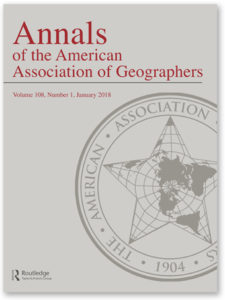 The most recent issue of Annals of the American Association of Geographers has been published online (
The most recent issue of Annals of the American Association of Geographers has been published online (
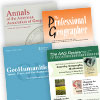 In addition to the most recently published journal, read the latest issue of the other AAG journals online:
In addition to the most recently published journal, read the latest issue of the other AAG journals online: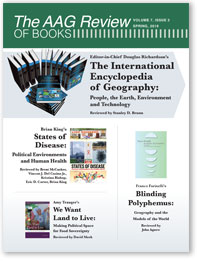 The latest issue of The AAG Review of Books is now available (
The latest issue of The AAG Review of Books is now available (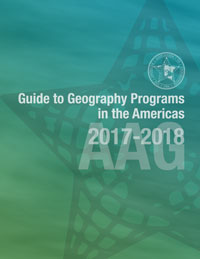 The AAG is continuing to accept entries from geography programs for the 2019 edition of the Guide to Geography Programs in the Americas. The deadline for submitting a listing has been extended to June 1, 2019.
The AAG is continuing to accept entries from geography programs for the 2019 edition of the Guide to Geography Programs in the Americas. The deadline for submitting a listing has been extended to June 1, 2019.
 Do you ever wonder what it is like to be the only GIS analyst at a company? This month learn more about being the primary GIS analyst with Daniel McGlone, Senior GIS Analyst and Cicero Data Manager, at Azavea. Daniel explains his multifaceted career, one of the reasons why he wanted to work in geography, and some of the moments along his path to his current employment.
Do you ever wonder what it is like to be the only GIS analyst at a company? This month learn more about being the primary GIS analyst with Daniel McGlone, Senior GIS Analyst and Cicero Data Manager, at Azavea. Daniel explains his multifaceted career, one of the reasons why he wanted to work in geography, and some of the moments along his path to his current employment.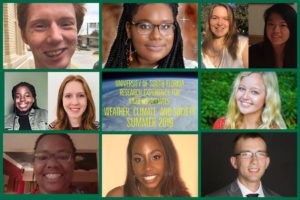
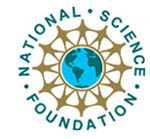 The NSF has recently circulated a Dear Colleagues Letter seeking those interested in establishing Research Coordination Networks for the Coastlines and People (CoPe) Project first explored in September 2018. One page summaries of projects and programs related to CoPe are being accepted until May 31, 2019 with a full proposal deadline of June 28, 2019.
The NSF has recently circulated a Dear Colleagues Letter seeking those interested in establishing Research Coordination Networks for the Coastlines and People (CoPe) Project first explored in September 2018. One page summaries of projects and programs related to CoPe are being accepted until May 31, 2019 with a full proposal deadline of June 28, 2019. The AAG’s Geography Faculty Development Alliance (GFDA) will once again offer a valuable in-depth opportunity for early career professionals and department leaders in Geography to learn and engage during its annual workshops June 23-29, 2019, at George Washington University in Washington, D.C. The shorter four-day workshop for department leaders (June 26-29) will overlap with the week-long conference for early career attendees providing a full career spectrum of exercises and activities.
The AAG’s Geography Faculty Development Alliance (GFDA) will once again offer a valuable in-depth opportunity for early career professionals and department leaders in Geography to learn and engage during its annual workshops June 23-29, 2019, at George Washington University in Washington, D.C. The shorter four-day workshop for department leaders (June 26-29) will overlap with the week-long conference for early career attendees providing a full career spectrum of exercises and activities. Redrawing congressional district boundaries, an activity that happens every ten years following the decennial census, may be the most consequential application of geography in the United States. As congressional elections have become less competitive, many are raising questions about the current boundaries of congressional districts… Esri’s Policy Maps team formed the research question: How much are current congressional boundaries defined by physical features (mountains and rivers), infrastructure (highways and railroads), or other existing administrative boundaries (county and place boundaries)?
Redrawing congressional district boundaries, an activity that happens every ten years following the decennial census, may be the most consequential application of geography in the United States. As congressional elections have become less competitive, many are raising questions about the current boundaries of congressional districts… Esri’s Policy Maps team formed the research question: How much are current congressional boundaries defined by physical features (mountains and rivers), infrastructure (highways and railroads), or other existing administrative boundaries (county and place boundaries)?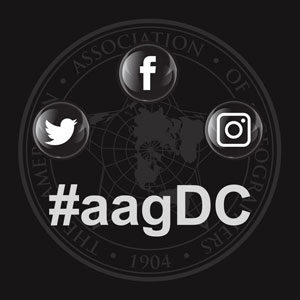 We’re getting closer to the 2019 AAG Annual Meeting! Whether you will be attending the meeting all week, for a few days, or looking to follow the action from afar, there are plenty of ways to get involved using social media. Social media is a great way for seasoned conference goers and newcomers alike to network, report on new research, engage in lively debate with those inside and outside of the discipline, and find out what’s going on during the largest geography conference in the world! Start planning your #aagDC social media strategy today with these helpful guidelines!
We’re getting closer to the 2019 AAG Annual Meeting! Whether you will be attending the meeting all week, for a few days, or looking to follow the action from afar, there are plenty of ways to get involved using social media. Social media is a great way for seasoned conference goers and newcomers alike to network, report on new research, engage in lively debate with those inside and outside of the discipline, and find out what’s going on during the largest geography conference in the world! Start planning your #aagDC social media strategy today with these helpful guidelines!

